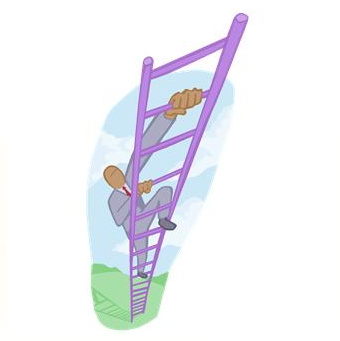Tom Gelbmann of Gelbmann & Associates, LLC – eDiscovery Trends

This is the third of the 2013 LegalTech New York (LTNY) Thought Leader Interview series. eDiscoveryDaily interviewed several thought leaders at LTNY this year and generally asked each of them the following questions:
- What are your general observations about LTNY this year and how it fits into emerging trends?
- If last year’s “next big thing” was the emergence of predictive coding, what do you feel is this year’s “next big thing”?
- What are you working on that you’d like our readers to know about?
Today’s thought leader is Tom Gelbmann. Tom is Principal of Gelbmann & Associates, LLC. Since 1993, Gelbmann & Associates, LLC has advised law firms and Corporate Law Departments to realize the full benefit of their investments in Information Technology. Tom has also been co-author of the leading survey on the electronic discovery market, The Socha-Gelbmann Electronic Discovery Survey; in 2011 he and George Socha converted the Survey into Apersee, an online system for selecting eDiscovery providers and their offerings. In 2005, he and George Socha launched the Electronic Discovery Reference Model project to establish standards within the eDiscovery industry – today, the EDRM model has become a standard in the industry for the eDiscovery life cycle.
What are your general observations about LTNY this year and how it fits into emerging trends?
{Interviewed the first morning of LegalTech} The most notable trend I have seen to lead up to LegalTech is the rush to jump on the computer assisted review bandwagon. There are several sessions here at the show related to computer assisted review. In addition, many in the industry seem to have a tool now some are promoting it as an “easy” button. There is no “easy” button and, if I can mention a plug for EDRM, that’s one of the things the Search group was concerned with, so the group published the Computer Assisted Review Reference Model (CARRM) (our blog post about CARRM here).
To help people understand what computer assisted review is all about: it’s great technology and, if well used, it can really deliver great results, save time and save money, but it has to be understood it’s a tool. It’s not a substitute for a process. The good news is the technology is helping and, as I have been seeing for years, the more technology is intelligently used, the more you can start to bend the cost curve down for electronic discovery. So, what I think it has started to do and will continue to do is level off those costs on the right hand side of the model.
If last year’s “next big thing” was the emergence of predictive coding, what do you feel is this year’s “next big thing”?
I think one of the “next big things” which has already started is the whole left side of the model which I would characterize as information governance. Information governance is on the rise and a lot of people in the industry believe that information governance today might be where electronic discovery was in about 2005 or 2006. We need a lot of understanding, standards and education on effective approaches to information governance because that’s really where the problems are. There are significant expenditures by organizations trying to work with too much data and not being able to find their data. Associated with that, will be technology that will help and I also anticipate a significant increase in consulting services to help organizations develop effective policies and procedures. The consulting organizations that can get it right and communicate it effectively will be able to capitalize on this aspect of the market. Related to that, from a preservation standpoint, we have been seeing more software tools to help with litigation hold as more organizations get serious about preservation.
Another big trend is education. EDRM is involved with the programs at Bryan University and the University of Florida (Bill Hamilton deserves a lot of credit for what is happening there). I think you are going to see that continue to expand as more universities and educational facilities will be providing quality programs in the area of electronic discovery and perhaps information governance along the way.
The last trend I want to mention is a greater focus on marketing. From a provider’s standpoint, it seems that there has been a flood of announcements about organizations that have hired a new marketing director, either overall for a specific region (west coast, east coast, South America, etc.). Marketing is really expanding in the community, so it seems that providers are realizing they really have to intelligently go after business. I don’t believe we saw that level of activity even two or three years ago.
What are you working on that you’d like our readers to know about?
With regard to EDRM, we had a very productive mid-year meeting where we asked our participants to help us plan for the future of EDRM. As a result, we came up with several changes we are immediately implementing. One change is that projects are going to be much smaller and shorter duration with as few as one to five people working on a particular item to get it done and get it out to the community more quickly for feedback. One example of that which we discussed above is CARRM. We just announced another project yesterday which was the Talent Task Matrix (our blog post about it here). We already have 91 downloads of the diagram and 87 downloads of the spreadsheet in less than a day. The matrix was very good work done by a very small group of EDRM folks. We also dropped the prices for EDRM participation and there are also going to be additional changes in terms of sponsorships and advertising, so we are changing as we are gearing up for our 10th year.
Also, we’re very excited about the additions we have made to Apersee in the last six months. One addition is the calendar which we believe is the most comprehensive calendar around for eDiscovery events. If it is happening in the eDiscovery world globally, it’s probably on the Apersee calendar. For conferences and webinars, the participating organizations will be listed, with a link back to their profile within Apersee. We are also tracking press releases related to eDiscovery, enabling users to view press releases chronologically and also see the press releases associated within organization to see what they have said about themselves through their press releases. These are examples of what Apersee is doing to build the comprehensive view of eDiscovery organizations to show what is happening, what they are doing and what services and products they offer.
Thanks, Tom, for participating in the interview!
And to the readers, as always, please share any comments you might have or if you’d like to know more about a particular topic!
Disclaimer: The views represented herein are exclusively the views of the author, and do not necessarily represent the views held by CloudNine Discovery. eDiscoveryDaily is made available by CloudNine Discovery solely for educational purposes to provide general information about general eDiscovery principles and not to provide specific legal advice applicable to any particular circumstance. eDiscoveryDaily should not be used as a substitute for competent legal advice from a lawyer you have retained and who has agreed to represent you.





